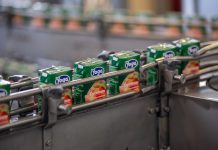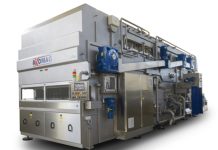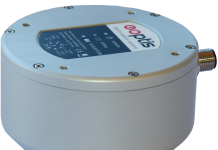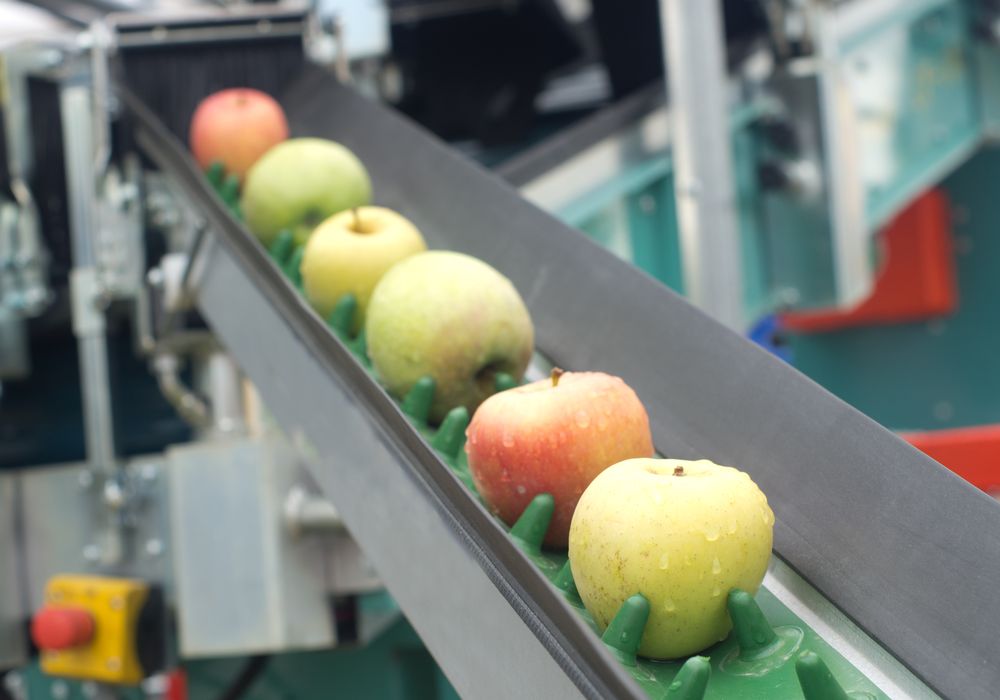 There are an increasing number of manufacturing processes in which checks are conducted on all products and no longer on individual samples. Non-invasive in-line systems allow weight control, the detection of metals and other foreign bodies, as well as checking correct labelling and integrity of packagingextremely accurately, even at high speeds.
There are an increasing number of manufacturing processes in which checks are conducted on all products and no longer on individual samples. Non-invasive in-line systems allow weight control, the detection of metals and other foreign bodies, as well as checking correct labelling and integrity of packagingextremely accurately, even at high speeds.
Non-invasive in-line inspection systems for weight control, the detection of metals, foreign bodies and other irregularities, correct labelling and integrity of packagingcan be applied throughout the entire production process: from the receipt of raw materials to actual production, up to packaging/filling operations. All this can be controlled by a data management software. Thanks to various in-line inspection systems, the product is checked before it leaves the factory, reducing to a minimum the risk of food product recalls from the market and preserving brand reputation and correct profitability.
Weight control solutions. Food companies can rely on a wide variety of systems to control the weight of their products in-line, which are present on the market and are well suited to any type of packaging, even at high production speeds, ensuring reduction of waste and optimization of food processing. These high-precision weight-measuring instruments are used to control the weight of individual products throughout the entire production process, both in the dosage and packaging phases, to ensure the best outcome of recipes and that products leave the production line with the correct, standard weight. Recipes are designed for specific gram weights.
Selling underweight products may result in penalties, while overweight products are waste which can affect the company’s profitability. Weight control systems can be static or dynamic. The first measure the weight of products when they are not moving, while dynamic, fully automated ones weigh products as they move along a production line, rejecting non-standard weight ones using appropriate automatic devices, such pneumatic pusher arms or air-jets. They are therefore suitable for inspections on automated lines, therefore without human intervention. In general, dynamic weight control systems are equipped with a section in which the product or ingredients are fed in, a weighing section and a section that feeds the outgoing product or ingredient by means of a sorting or rejection device.
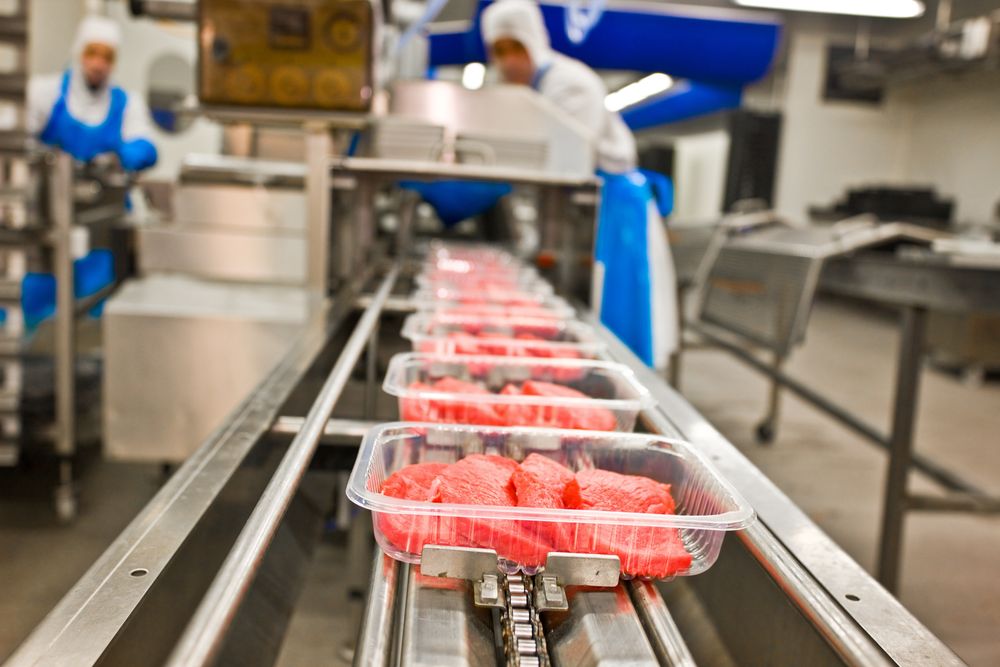
Metal detection, foreign bodies and other irregularities. Food companies can choose between different metal detection solutions which are present on the market: from tunnel detectors, which can be integrated with the transport systems, to gravity fall systems for bulk products and filling and sealing processes. A metal detector allows you to detect all types of metal contaminants, including ferrous, non-ferrous metal ones and even stainless steel grades that are difficult to identify. Tunnel metal detectors can be integrated with conveyor belts and therefore with the rest of the production line.
On the market, there are combined systems which allow simultaneous weight control and the detection of metals. Another metal detection solution can be found in the most innovative X-ray inspection system. Unlike the classic metal detector, X-ray inspection systems are able to detect and reject not only ferrous, non-ferrous and stainless steel materials, but also glass, stone, calcified bones, plastic and high-density rubber, irrespective of their size, shape and position inside the food or packaging. X-ray inspection is based on the principle that foreign materials and food absorb radiation in a different manner.
The machinery detects these absorption differences and therefore foreign bodies. In the same way, the X-ray inspection system can check the shape and size of the products inside the packaging, as well as their weight or other irregularities,such as incomplete filling or defective packaging, deformations and cracks of a packaging or the presence of air bubbles. X-rays can be used to analyze food of different consistencies, such as products which move inside the package, as in the case of breakfast cereals, chips, sweets in plastic bags etc. Both detection with a metal detector and an X-ray system work well evenon high-speed lines.
For certain applications, as in the case of the inspection of low-density packs, manufacturers are able to reduce the power required for operating the X-ray generator, thus ensuring reduced energy consumption of even 20% in standard conditions. X-ray inspection is safe both for food and workers: the amount of radiation used for checking the products is very low and has no negative effect on safety, quality and the nutrients contained in foods. Workers are protected from X-ray emissions by guards placed at the tunnel entrances.
Inspection of bulk products. Inspection systems for bulk food can be distributed throughout the entire production process. Upon arrival, these systems are used to select the products and ingredients, but also to remove contaminants before they enter the actual production cycle, allowing savings, as well as in many cases the reworking and re-use of the rejected product or ingredient. Located at the raw materials entry point, inspection systems allow the company to promptly inform the supplier of any irregularities.
The elimination of possible large-sized contaminants, before the production process itself, can prevent damages to the machinery that is encountered next on the line. These inspection systems allow you to control a wide variety of fresh, frozen or dried ingredients and bulk products, such as flour, dried fruit, cereals, pulses, fruit and sweets and other confectionery, snacks and fish products etc. These systems are designed to inspect bulk products before packaging or mixing them as ingredients in order to obtain the end products.
Detection sensitivity in bulk products is generally higher than that in final sealed packages, also because this involves checking products that have a more uniform consistency, with the same ingredients and shapes. These inspection systems for bulk products can be installed along the conveyor belt or in a gravity fall mechanism, as often occurs when inspecting powders, granular bulk products and sweets.
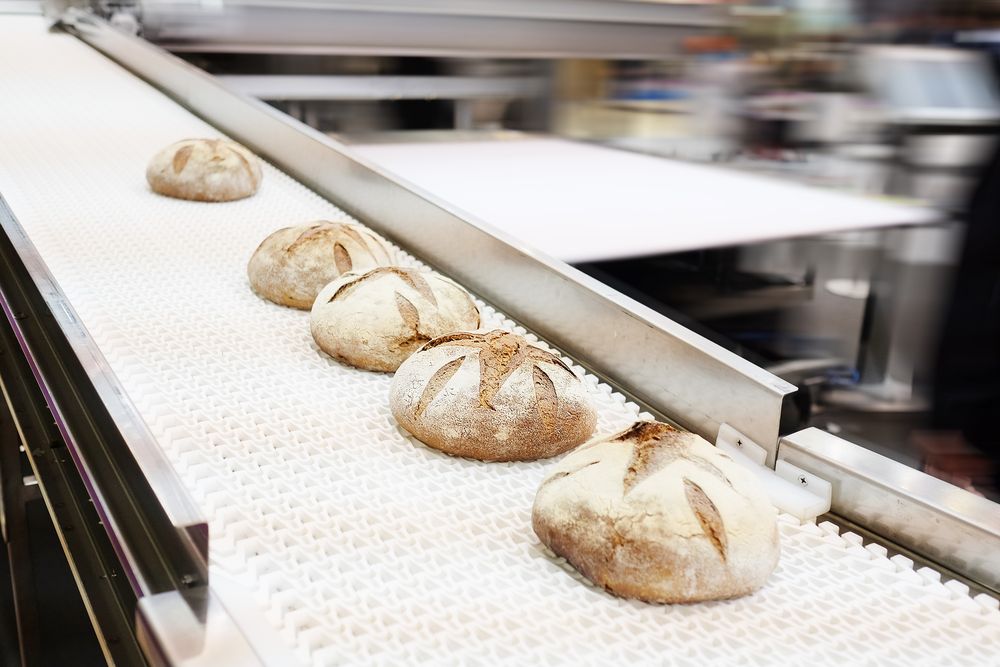
Checking for leaks. To check for leaks in inert gas atmosphere packed packaging, the alternative to visual inspections or tests is to use a water bath on some samples. This test system is integrated into the production line, allowing you to check all packs, no longer on a sample basis, and to reject the faulty ones, thus preventing the deterioration of the product and the destruction or reworking of the entire batch.
The technology allows you to perform quick, in-line, non-destructive seal-tightness tests, using hydrogen as the detection gas. During the packaging process, a mixture of gases containing hydrogen is inserted into the packs, which in no way alters the foods. Hydrogen is detected by a sensor, which activates a visual alarm. When the alarm is activated, the defective blister packs are rejected from the production line, by moving the faulty products with compressed air or the appropriate product removal arm.
Inspection of the labels and package integrity. Visual inspection systems are also used to check labels, printed data and product packaging, such as plastic containers, glass bottles, jars, screw- or snap-locking caps, flat packs, cartons and blister packs. These systems operate at high speeds and allow you to maintain high productivity, which is impossible to achieve using manual inspection methods, without jeopardizing the quality of labels and packaging. In more general terms, these label and packaging inspection systemsallow you to check the position and presence of the label, print quality, legibility of the information and to verify the barcode, therefore, to check the data to be printed, but also to identify the model and characters.
Using high-resolution video-recorders, you can also verify the presence and correctness of the sealing system, the possible presence of the security seal, thus the possible presence of damages and full compliance of the pack with all the quality criteria established by the company. Optical inspection systems therefore control the quality of the packaging and respective labels,even in irregular-shaped containers. The presence of multiple video-cameras allows the visual inspection system to acquire more areas of the entire product surface, reducing the distortion of the image. Visual inspection does not only ensure the integrity of the pack, but it contributes to tracing it because it files all the images taken during production, allowing its path to be retraced, should this be required.
Rejection systems. Companies have at their disposal several rejection devices to choose from in order to minimize product wastage, according to the manufacturing speed, consistency, weight and size of the food product. There are multiple-blade systems or automatic rejection mechanisms, which can be used both for rejecting faulty or unsuitable products and for dividing up the products or ingredients on multiple lines.
There are air insufflation deviceson the market, whereby air is blown on faulty products or products which are incorrectly orientatedin order to separatefrom the rest of the compliant products. The rejection systems can be equipped with a reject verification technique, which allows collecting unsuitable products either in a specific container or on a different conveyor belt.
Checking procedures. The in-line inspection systems must be checked to ensure the proper functioning and performance levels of the detector. The system can be checked using trial packs of the same dimensions, shape and weight of the actual products as they move along the line. In the same way, you can verify its correct operation, even in the inspection of bulk products.
It is also important to choose the types of contaminants to be detected so that they are compatible with your products. All these inspection systems are controlled by computers, which allow the processing of statistics that show not only the number of faulty products, but also the reason for the defects. This allows manufacturers to identify the more common faults and to correct any imperfections in the production line.

